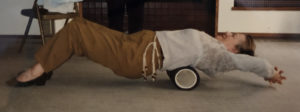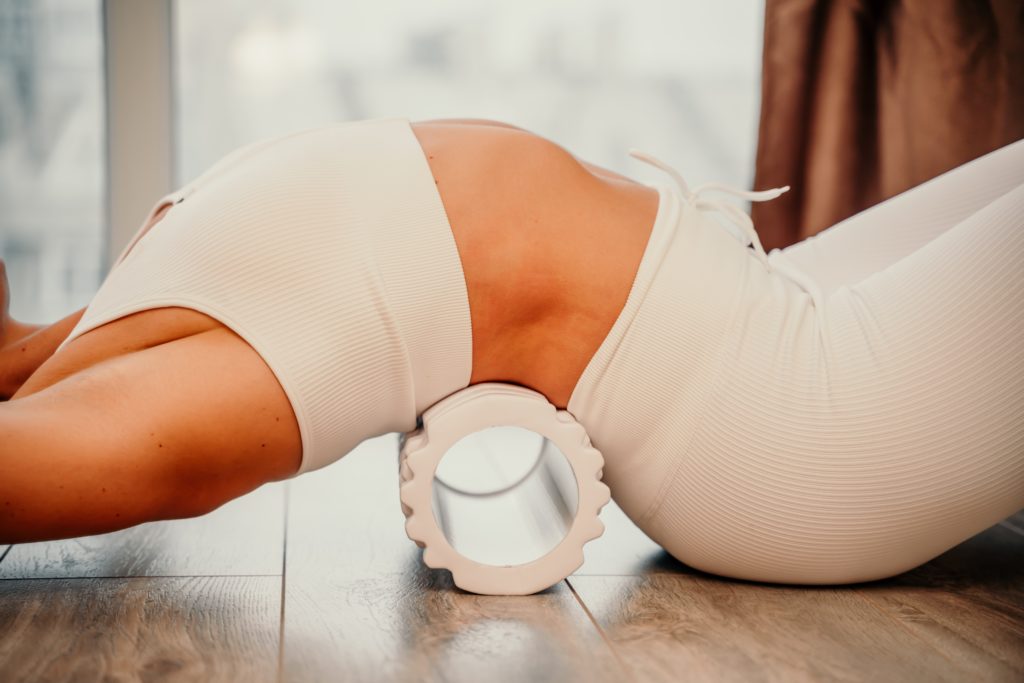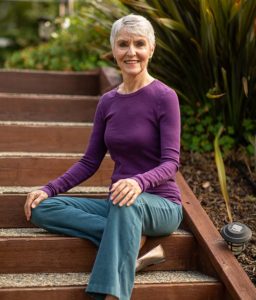Ouch!
I often hear myself responding “ouch” to an exercise image that scares the wits out of me – like this one.. There are two clear problems here: first, lying over a roller like this puts your spine at risk, and second, it makes your spine more curved.
You devote time and energy to being “fit.” Don’t you deserve reliable information 0n how to achieve your goals?
Despite the dangers, stretching like this often feels good.
When we sit collapsed over electronic devices our chest collapses. Our back stiffens. We poke our head forward and our neck struggles to hold the weight, which starts at 12 pounds and gets heavier with every inch it moves forward . We can’t take a full breath. No wonder this “counter pose” brings a feeling of relief.
Teachers, therapists, coaches, and trainers often prescribe positions like this. One goal is to counteract the miseries of computer use by placing our bodies in what we think is an opposite position. But this strategy is ineffective for several reasons.
For one thing, you can’t straighten the spine by bending it.
Look at the image again. You can see the deep curves in this woman’s spine. Her lumbar vertebrae tip backward and her upper spine compresses. She may feel that she’s improving her spine, but really, she’s caught in a vicious cycle. First she curves forward at her computer. Then she curves backward in poses like this. Her spine never straightens.
Also, you can’t balance the body by taking it out of balance.
Most spines need remobilization. But draping yourself over a roller this way creates a spine that is hyper-mobile in the low back and stiff in the ribcage.
The woman in the photo above moves where she is mobile and remains stiff where she is stiff. She may feel temporary relief from the collapse of her normal sitting posture, but it doesn’t last, and she is never comfortable. Her weak lower back and stiff ribcage create all kinds of problems, including back and joint pain, restricted breathing, slow digestion, and lost connection to her natural abdominal strength.
Understanding these concepts takes education and experiencing it in your body.
The woman who figured all this out is Noelle Perez of the Institute D’Aplomb. (This link gives a current explanation of Noelle’s work.) She was a student of BKS Iyengar and taught yoga herself. With Iyengar’s urging, she began to observe people who functioned well into their old age. As she studied them she would explore their alignment in her own body. In time Noelle defined the characteristics of a balanced body.
Here is Noelle in 1994 demonstrating the use of the roller . Note the shape of her torso, which is the same whether rolling, standing, or sitting.

This work is most effective for each of us if we do not treat it as an academic study. Learning concepts will not change our bodies. Without practice, we can’t reap the benefits. And without practice we’ll never really understand the sensation of Balance in our body.
In the noon class on Friday, June 10th, we will explore the most effective ways to use the roller. Come prepared to practice.
~Jean Couch
Since I will be out of town on June 17th there will be no blog, newsletter, or class next week.


